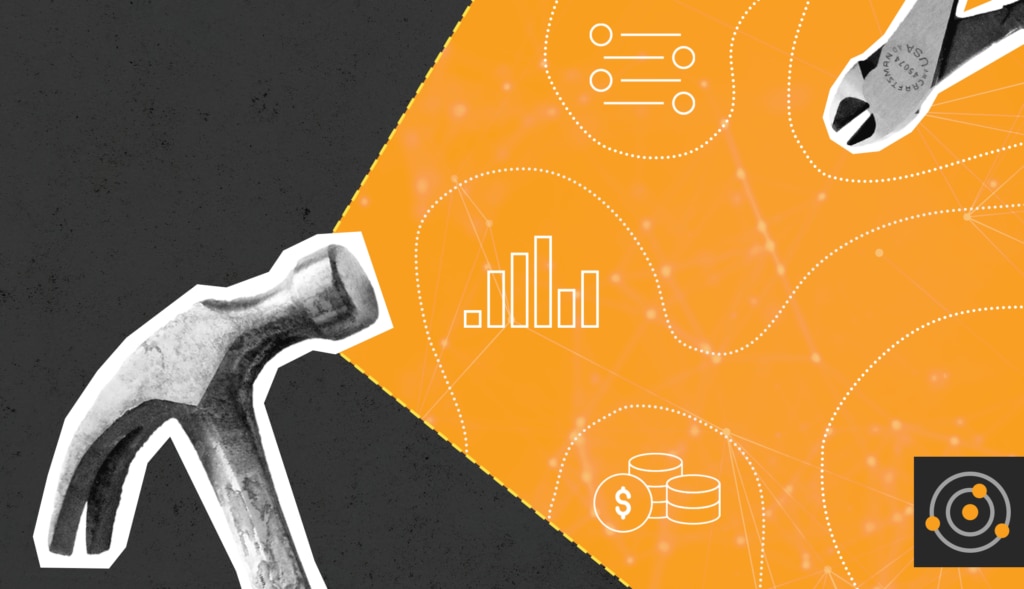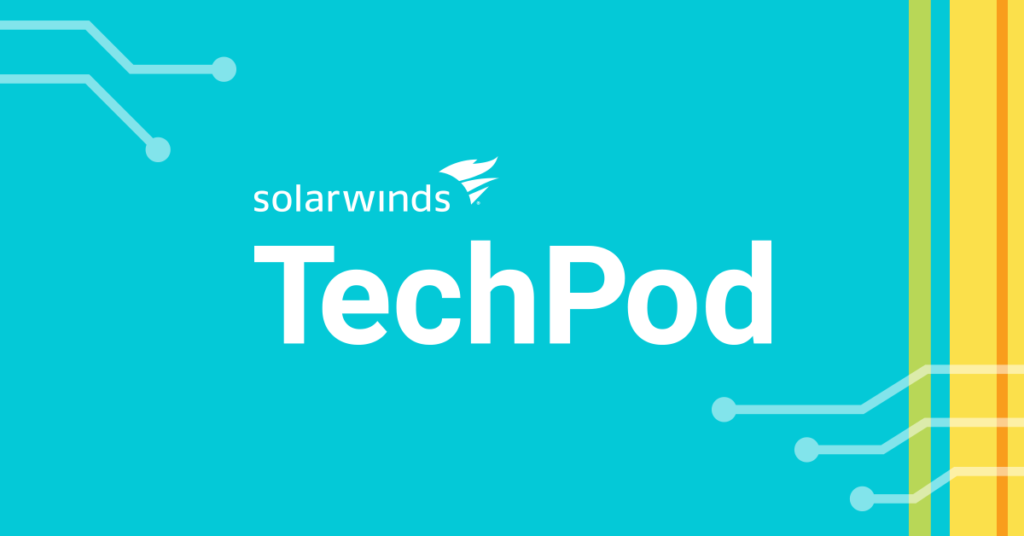This guide gives you a practical shortlist of the best network monitoring tools so you can compare options that fit your scale, budget, team skills, and roadmap. We’ll preview how modern monitoring tools connect device health, paths, and service performance to move you from firefighting to prevention. The goal is simple: help you choose a platform that cuts alert noise, gets you to root cause sooner, and keeps your users happy.
First Things First: What Is Network Monitoring?
Network monitoring is the day-by-day (and minute-by-minute) watch on routers, switches, firewalls, wireless access points, and cloud links. At its core, it tracks bandwidth, latency, packet loss, and device health, then alerts you when network behavior drifts from normal. Good platforms provide features like automated discovery, dynamic topology mapping, and dashboards that visualize how infrastructure supports services. They plug into ticketing, automate common checks, and produce reports that help with compliance and capacity planning.
Importantly, network monitoring doesn’t exist in isolation—it’s much more effective when running alongside server monitoring and application monitoring, so you can tell whether a slowdown is the wire, the workload, or an upstream dependency. More advanced tools bundle the lot, pairing network insight with server and application monitoring tools in one place. That unified view helps you troubleshoot faster, stop repeat incidents, and protect the experience for your business-critical services. For a lot more detail on what network monitoring is all about, check out: What Is Network Monitoring? in the SolarWinds IT Glossary.
Why Robust Network Monitoring is Critical to Operational Resilience
Done right, modern monitoring software ties network, systems, and apps together so you can troubleshoot and intervene with confidence. Correlation between data points and systems cuts finger-pointing between teams and clarifies reports that “the network is slow.” Trend reporting means that capacity and refresh planning become more data-driven and less of a guess. Whether you run an all-in-one monitoring platform or combine multiple tools, the right mix of network monitoring, server monitoring, and application monitoring software will deliver the following:
- Improved network performance and reliability
- Better network and IT service delivery and operations
- Higher productivity for network and IT operations teams
- Greater network reliability supporting core business operations
- Enhanced employee and customer satisfaction
- Stronger, data-driven decision-making around capacity and spend
You’ll also see fewer surprise outages, more predictable change windows, and faster onboarding for new sites because dashboards, alerts, and reports are ready to go. Want real-world proof? See how one organization adopted unified visibility to scale resources, address bottlenecks, and ensure consistent application availability in this SolarWinds customer case study.
How to Choose The Right Network Monitoring Solution For You
Choosing the right network monitoring solution is tricky. There are plenty of standalone solutions that do a decent job at a modest cost, but lack the ability to monitor more than networking basics, and struggle to scale when needed. Here’s a starting point of critical considerations you should include in your thinking as you plan your selection and evaluation criteria:
- Scope and Coverage – List the sites, vendors, cloud accounts, and managed services that need to be included in scope. Support for Simple Network Management Protocol (SNMP) is probably a given, but check also for streaming telemetry, flows (NetFlow, IPFIX, sFlow), wireless, software-defined wide area network (SD-WAN), and internet path visibility.
- Correlation and Troubleshooting – Look for unified timelines that let you stack device health with interface utilization, errors and discards, path metrics, Transmission Control Protocol resets, Domain Name System (DNS) timing, and application data to speed mean time to repair (MTTR).
- Scalability and Data Retention – Check ingestion rates, data roll-ups, and data retention costs, focusing on how they scale.
- Integrations and Automation – Verify ticketing, chat, notification channels, and workflow hooks. Webhooks and APIs can be critical to help you automate onboarding and maintenance.
- Ease of Use – Favor clear topology, built-in diagnostics, and opinionated defaults that help junior staff see value right from the initial install.
- Pricing and Deployment – Compare software as a service (SaaS) versus self-hosted, licensing units, and how add-ons influence the total cost of ownership.
- Support and Community – Evaluate documentation, check out the training options, and assess for a supportive and collaborative user community that can act as a proxy for paid support when budgets are tight.
As always, the litmus test is what happens in the real world, so plan to run proofs of concept with representative sites and real incidents, measure mean time to repair, alert volume, and operator effort, then validate upgrade paths and licensing as you scale. If you’re unsure where to start, explore SolarWinds® Observability (SaaS and Self-Hosted) for unified network and hybrid visibility with path analysis, cross-stack correlation, and anomaly-based alerting - see SolarWinds Observability.
Top 14 Network Monitoring Solutions of 2025
1) SolarWinds Observability
SolarWinds Observability is an enterprise-ready monitoring platform providing vendor-agnostic capabilities with flexibility to deploy as SaaS or Self-Hosted software. It offers automated device discovery, support for multi-vendor environments, flexible data collection methods (SNMP, flow, APIs), and topology mapping.
The vendor-agnostic approach means it works great across Cisco, Juniper, Arista, Palo Alto, Fortinet, Aruba, Ruckus, and Extreme, and also supports cloud-native networking on Microsoft Azure, Amazon Web Services, and Google Cloud Platform. This cross-platform support is achieved through broad protocol support, including SNMP, NetFlow/IPFIX/sFlow, WMI, APIs, and streaming telemetry.
The solution provides intelligent mapping, flow analysis, anomaly-based alerting (to help drive down alert noise), and hop-by-hop internet path visibility via NetPath™. In addition, PerfStack™ correlation lets you put device health, interface utilization, errors and discards, Quality of Service (QoS) queues, and path metrics on a single timeline to confirm or deny whether the performance issue is with the network.
Since both self-hosted and SaaS deployment models are supported, teams running campus, branch, data center, and cloud can connect SaaS and Self-Hosted deployments for a single view with Platform Connect. Try the SaaS experience or go self-hosted for inside-the-firewall control.
Product pages: SolarWinds Observability
Free Trial pages: Download Self-Hosted Trial or Start SaaS Trial
2) LogicMonitor
LogicMonitor brings network, infrastructure, and cloud monitoring into a single SaaS platform. Lightweight collectors discover devices quickly, apply prebuilt templates, and learn baselines to reduce noise. It suits enterprises and service providers that want quick rollout, broad coverage, and integrations, and do not need on-premises levels of control.
- Key Features: Cloud-hosted collectors, broad device templates, dashboards spanning routers, firewalls, cloud edges, AI-assisted insights
- Pros: Quick time to value, strong integrations, solid multi-cloud coverage
- Cons: Costs can scale with footprint, some teams want finer on-prem control; deeper customizations may need tuning
Website: LogicMonitor network monitoring
3) Datadog
Datadog folds network visibility into the same pane as the infrastructure and applications, which are the vendor’s main focus. The single context helps teams chase down cross-domain issues quickly—think cloud-native traffic maps, device and DNS checks, and analytics that tie back to services, delivered as SaaS with a large marketplace of integrations.
- Key Features: Network monitoring alongside infrastructure and apps, microservices traffic visibility, device and DNS monitoring, rich analytics
- Pros: Deep cloud coverage, extensive integrations, strong correlation across stacks
- Cons: Pricing can rise with metrics and events, on-prem device coverage may need planning, and extra collectors
Website: Datadog Network Monitoring
4) Dynatrace
Dynatrace approaches network performance through application context, using its AI to stitch process communications, errors, and latency into cause-and-effect stories. The focus favors app-centric teams that want deep analytics and automation. Device-centric SNMP detail exists, but many buyers pair Dynatrace with a traditional Network Management System (NMS) for full coverage.
- Key Features: AI-driven analytics, process-level communications view, retransmission and connection error detection, automatic discovery
- Pros: Powerful root-cause analysis, tight application correlation, strong automation
- Cons: Device-centric SNMP workflows are not the main focus, rollout and licensing can feel complex for pure NetOps
Website: Dynatrace network monitoring
5) ManageEngine OpManager
OpManager covers classic network monitoring in an on-prem package. Discovery, mapping, and alerting come as standard, with options that extend into server and virtualization. It fits organizations with fewer requirements for scaling, and that prefer familiar workflows, device-based licensing, and hands-on control.
- Key Features: Traditional device monitoring, discovery and maps, alerting and reporting, support for many network and server roles
- Pros: Device-based licensing, broad role coverage, approachable dashboards
- Cons: Very large estates need careful design, depth can vary by module and version
Website: ManageEngine OpManager
6) Paessler PRTG
The Paessler PRTG product (“Paessler Router Traffic Grapher”) uses a sensor model to make monitoring approachable. You enable sensors for devices, services, and cloud endpoints, then shape dashboards and alerts around what matters to you. Although short on built-in AIOps, it’s a hit with lean teams that want basic wins today while keeping room to scale and fine-tune tomorrow.
- Key Features: Sensor-based model, hundreds of prebuilt sensors, customizable dashboards, coverage for networks, servers, apps, and cloud services
- Pros: Fast setup, flexible catalog, clear alerting
- Cons: Sensor accounting can get tricky at scale, AIOps capabilities are lighter than newer SaaS options
Website: Paessler PRTG Network Monitor
7) Auvik
Auvik aims for speed and simplicity. It auto-discovers networks, maps relationships, and backs up configurations out of the box, wrapped in multi-tenant workflows many MSPs favor. Teams use it to standardize operations across sites without building heavy processes or expecting junior staff to become protocol experts.
- Key Features: Automated discovery and topology, configuration backups, traffic insights, multi-tenant design for IT teams and service providers
- Pros: Easy onboarding, strong multi-tenant workflows, opinionated defaults that help newer staff
- Cons: Fewer deep customizations, costs can rise with fleet size or retention requirements
Website: Auvik Network Management
8) Zabbix
Zabbix offers open-source monitoring that scales if you can invest engineering time in building out templates and tuning. It supports SNMP, agents, and cloud checks, with strong community momentum. Many organizations adopt it to avoid per-device licensing and to tailor dashboards, alerting, and automation closely to their environment.
- Key Features: Open-source platform, templates for the most common vendors, SNMP and agent support, and cloud endpoint monitoring
- Pros: Open and flexible, strong community, and no per-device licensing
- Cons: Requires engineering time for tuning, enterprise packaging and support depend on plan and partner
Website: Zabbix network monitoring
9) WhatsUp Gold
WhatsUp Gold keeps device discovery, topology maps, traffic analysis, and logs in a single on-prem console. It’s approachable for midsize teams that want visual maps and straightforward workflows. For multi-site or internet path scenarios, you can add modules or complementary tools as you grow.
- Key Features: Device discovery, interactive maps, traffic analysis, and log visibility in one console
- Pros: Approachable mapping and workflows, on-premises control, integrated flow and log views
- Cons: Multi-site and internet path needs may require add-ons, large-scale rollouts need planning
Website: WhatsUp Gold
10) Cisco ThousandEyes
ThousandEyes looks beyond your perimeter to show internet and SaaS paths. Synthetic tests and endpoint agents reveal where loss or latency creeps in—ISP, backbone, or provider edge. Many teams pair it with device monitoring to bridge visibility from campus and data center to the open internet.
- Key Features: Provider-aware internet and SaaS path visibility, synthetic tests, endpoint agents, Cisco ecosystem integrations
- Pros: Excellent external path insight, helpful for remote work and SaaS, broad test coverage
- Cons: Not a full device monitoring suite, best paired with traditional polling and configuration monitoring
Website: Cisco ThousandEyes
11) Kentik
Kentik starts with powerful flow analytics and layers in SNMP and telemetry for an NMS-style view. The SaaS model makes heavy analysis accessible without building clusters. It resonates with enterprises and service providers that need traffic insights, fast queries, and flexible dashboards they can share widely.
- Key Features: Flow analytics plus NMS features, SNMP and streaming telemetry in SaaS, flexible queries and dashboards
- Pros: Powerful traffic analytics for large enterprises and service providers, fast SaaS delivery
- Cons: Depth depends on available telemetry, some features target specialist teams
Website: Kentik NMS
12) IBM SevOne NPM
IBM SevOne NPM focuses on scale: high-rate collection, long-term retention, and reporting you can hand to leadership. It suits large networks that care about trends as much as alerts. Flow-to-metric pivots help operators jump from symptoms to likely causes when time is tight.
- Key Features: High-scale metric collection, flow-to-metric pivots, robust reporting and dashboards for large environments
- Pros: Strong scale, application-centric views, flexible reporting
- Cons: Implementations can be complex, licensing and upgrades require planning in large estates
Website: IBM SevOne NPM
13) NETSCOUT nGeniusONE
NETSCOUT nGeniusONE leans on packet-derived ‘smart data’ to show what users actually experience. You capture traffic once and analyze many ways for service assurance and troubleshooting. It fits operators who need ground-truth visibility for complex environments and can support appliance deployment and ongoing packet storage.
- Key Features: Packet-derived “smart data,” service assurance across networks and applications, appliance-based capture and analytics
- Pros: Deep packet-level insight, proven at scale in complex environments
- Cons: Appliances and specialized skills may be required, planning for packet storage capacity and necessary staffing is required
Website: NETSCOUT nGeniusONE
14) Riverbed Alluvio NetProfiler
Alluvio NetProfiler turns raw flow records into usable insight for performance, capacity, and security investigations. Its strengths show up in hybrid and SD-WAN environments where paths change often. Many teams pair it with packet tools when they need deeper forensics alongside broad, continuous flow coverage.
- Key Features: Advanced flow analytics, performance and capacity investigations, hybrid and SD-WAN visibility, service-centric dashboards
- Pros: Strong flow-based reporting, helpful for SD-WAN and hybrid troubleshooting
- Cons: Packet-level drills require companion tools, integration and data pipeline needs need to be confirmed early
Website: Riverbed NetProfiler
The AI- and Automation-Enabled Future of Network Monitoring
Artificial intelligence for IT operations (AIOps) has moved on from being a marketing buzzword to being genuinely useful. Three wins you should expect from any modern platform: First, AI-driven anomaly-based alerting learns your normal, flags statistically meaningful deviations, suppresses duplicates, and groups related symptoms. Second, AI-assisted root cause analysis connects device faults, path changes, and app slowdowns on one single timeline, so you jump from “what happened” to “why” far quicker. Third, predictive capacity planning spots saturation trends before users feel the pain, while task automation handles config baselines, interface cleanup, and change verification that scales.
Want the deeper dive? Check out 5 Ways AIOps Can Transform Your IT Operations. To put it into practice, start small: enable anomaly alerts on high-value links, compare noise and detection times with static thresholds, then roll out what works best for you.
Why SolarWinds Observability Is a Top Contender for Network Monitoring
SolarWinds Observability brings the network monitoring pieces you need into one place: automatic discovery and mapping, anomaly-based alerts, flow analysis, and hop-by-hop internet path mapping with NetPath. Alongside this, PerfStack puts network, server, and application metrics on a shared timeline so you can confirm or prove innocence when you’re hearing “the network’s running slow again.” Run self-hosted for inside-the-firewall control, use SaaS for speed of deployment, or connect both for one view. Built-in baselining helps cut alert storms, while NetPath and PerfStack keep troubleshooting evidence-driven, which speeds consensus when the heat is on.
>Start a free trial: SolarWinds Observability free trial
See pricing: SolarWinds pricing
Key Takeaway: Taking Your Network Monitoring To The Next Level
Choosing monitoring is about outcomes: fewer surprises, faster fixes, and happier users. Use the criteria above to narrow your shortlist, then pilot two options against your most painful incidents. Document before-and-after metrics, share results with stakeholders, and pick the platform that speeds resolution while fitting your security and procurement requirements. Plan enablement for operators early to lock in adoption. If you want practical, cross-stack troubleshooting with internet path visibility and anomaly-based alerts, SolarWinds Observability is built to help.
Get a demo: SolarWinds Observability
Your Questions Answered: Network Monitoring FAQs
Q1: How can I pinpoint where performance breaks down across the internet, cloud providers, and SaaS paths—beyond basic ping or traceroute?
Answer: Start with NetPath. It maps hops across internet service providers (ISPs), content delivery networks (CDNs), and third-party networks, tracks latency and loss over time, and isolates provider issues without extra hardware.
Learn more: NetPath overview
Q2: When someone says “the network is slow,” how do I correlate network, server, and app metrics on one timeline to prove or clear the network?
Answer: Use PerfStack to place interface utilization, errors and discards, Quality of Service (QoS) queues, device health, and path metrics alongside server and application signals. In minutes, you can show whether the network is the cause or a casualty.
Learn more: PerfStack performance analysis
Q3: Do I have to choose between SaaS and on-prem monitoring, or can I run self-hosted and still get a unified view and AI help?
Answer: You can do both. Monitor campus, branch, and data center gear on-premises and extend to internet and SaaS paths in the cloud. Platform Connect unifies views and routes alerts to standard channels.
Learn more: SolarWinds Observability
Q4: How does AI-driven anomaly detection cut alert noise compared to static thresholds, and how fast does it learn my environment?
Answer: SolarWinds machine learning-based alerts learn normal behavior from your data and then only fire on statistically abnormal conditions, which reduces false positives and alert storms. Learning begins quickly and improves as telemetry accumulates.
Learn more: AIOps in practice
Disclaimer
Product specifications and other information set forth herein have either been made accessible by suppliers, manufacturers, publications, or gathered from publicly available sources as of the date of this document. Although measures are taken to ensure the accuracy of the information, SolarWinds makes no representations or warranties as to the completeness or accuracy of the information and shall incur no liability for any errors or omissions as of October 2025.




